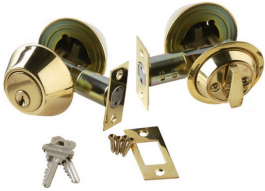Is your business or home safe jammed and seemingly impossible to open? Don’t worry; there’s a light at the end of the tunnel! Safes are made and used to keep our valuables “safe” but we never intend them to be unavailable to us! Hollywood movies tend to portray safe “cracking” as easy and fast but in truth, it takes skill and experience to correctly unlock and open a sealed or jammed commercial or residential safe.
PUT THAT HAMMER AWAY!
We are only half joking! All safes are not alike and some are built better than others; you already know that. Surprisingly many people resort to forcing their way back into their safe. Not only will this cause damage to your actual safe, it hardly ever works and can cause other damage to property or even persons. A jammed safe can be frustrating; after all, you don’t have access to your own cash, jewelry, art, documents or guns. You might even need access fast and can’t get it. Take for instance the need to access some cash or documents inside the safe. You may be closing on a real estate property or needing to fund a project of some kind and you are facing deadlines.
You may need to access a birth or death certificate in a hurry but due to your jammed safe, you can’t. You might even feel in danger and you keep a firearm inside the safe, just in case you need it. Calm your frustration and resist the urge to force your safe open (or destroy it!) as there are better ways to deal with the problem.
GET PROFESSIONAL HELP
Getting any kind of professional help sounds expensive and if it involves your Buckeye, AZ commercial or residential safe it just may be! That’s why it’s important to choose the right safe repair service to help. Many safe shops offer this service but all they do is call their own locksmith and add their service fee to your overall bill. Some even require you to bring the safe in to them. You really don’t need to mess with any of this. Do some checking for a solid commercial or residential locksmith that services safes on site. Here at Buckeye Locksmith AZ we do just that. Our mobile technicians will respond to your service call on a 24-hour basis and this includes holidays, too. We are well versed in all of the latest and most effective safe opening and repair techniques plus we have the experience needed to do the job right. Do you have to use our service? No; if you have your own locksmith that you are happy with you can give them a call. If not, you’ll need to start making phone calls and gathering additional information.
You’ll want to give an accurate description of your safe to your lock professional in order to get a reliable price quote and better service. Do you have the model type or manufacturer’s name?
Did you keep maintenance receipts or warranty information and are they handy? Can you describe what the actual problem is? For example is the combination lock not working or does the problem appear to be something else? Look for serial numbers and brand names on the safe itself; most likely on the bottom or sides of it.
ELECTRONIC SAFES
When you call for help the locksmith will ask you if your safe is electronic or not. How can you tell and why is this important? Here in Buckeye, AZ many residents and businesses use electronic safes. Electronic safes are also called digital safes and while they offer great security, they also occasionally break down. It’s the old adage “the more parts; the more that can go wrong” so you’ll need to be aware of a few things.
Is the safe really jammed or did you just forget the code and enter it wrong?
Do you remember the code but someone else changed it? It happens from time to time and knowing this can save you both embarrassment and service charge later!
Some electronic safes have a built-in locking mechanism that is activated when too many wrong attempts are made to enter the security code. It’s much like entering your password to many times incorrectly and getting locked out of your bank’s website.
Article source here: JAMMED SAFE? HERE’S WHAT YOU DO!
 Are you shopping for the
Are you shopping for the